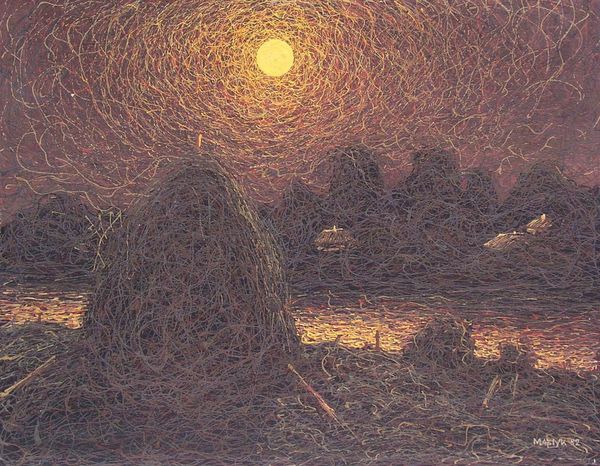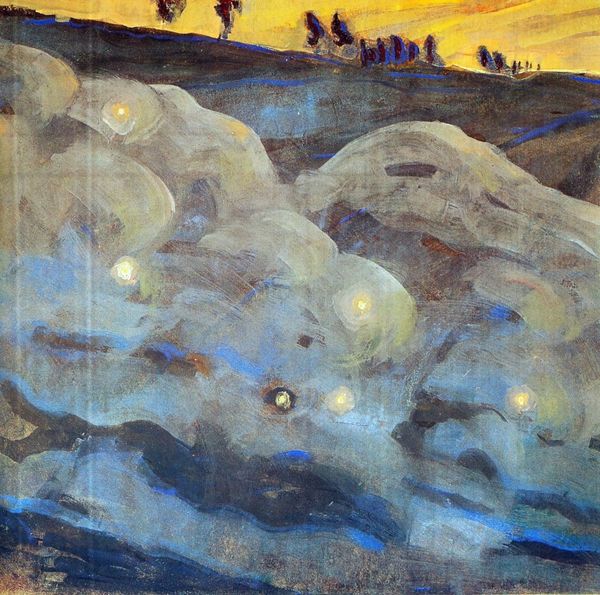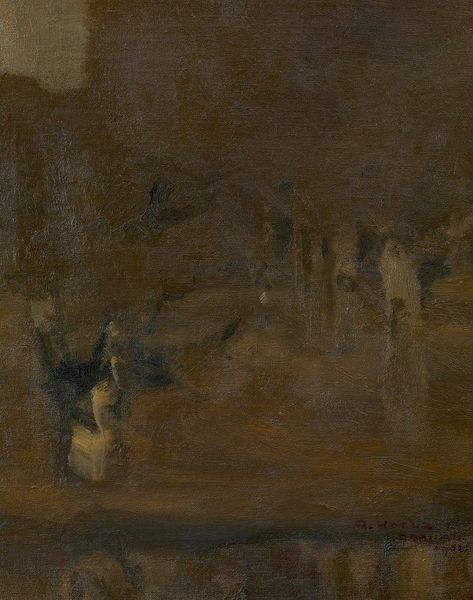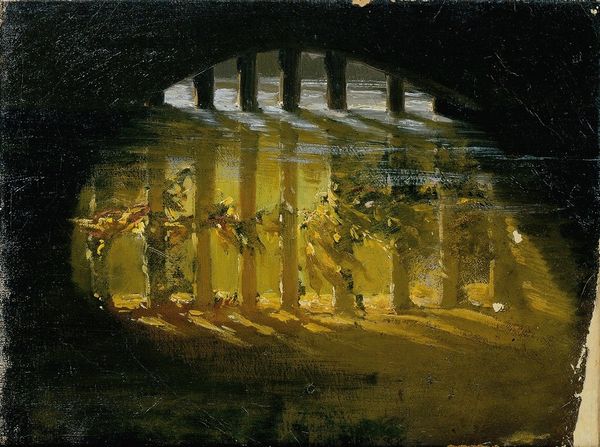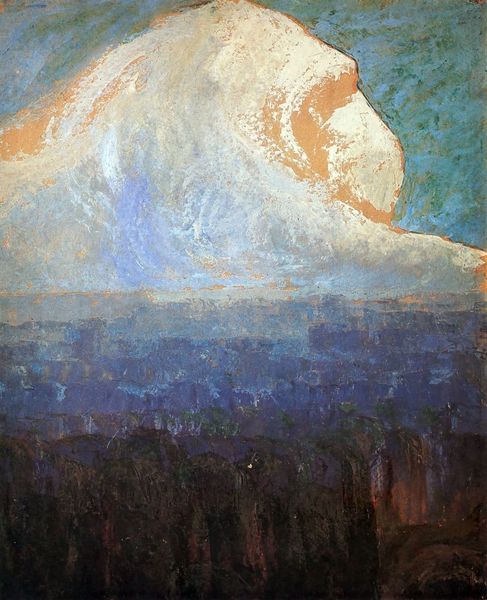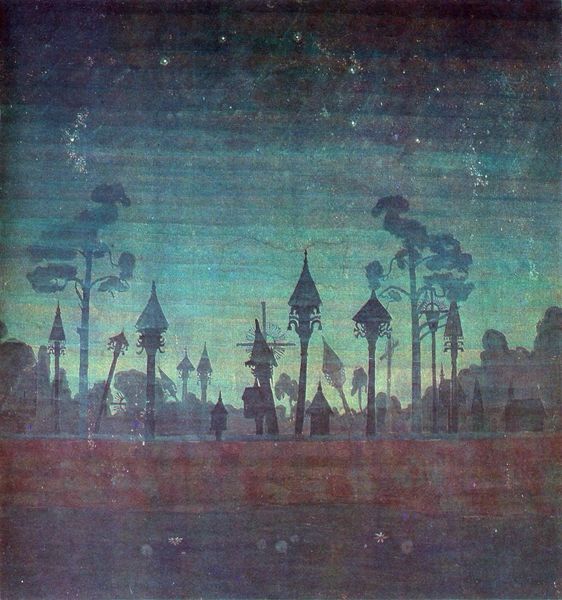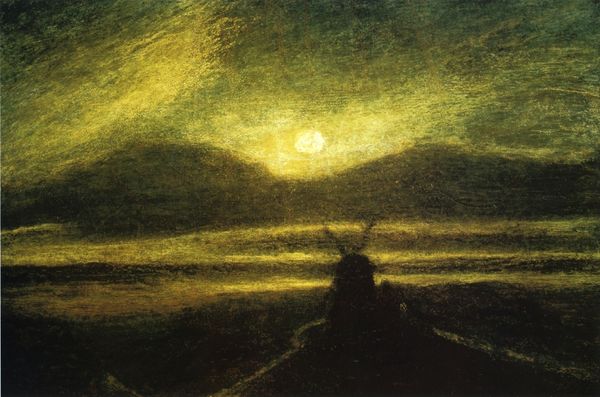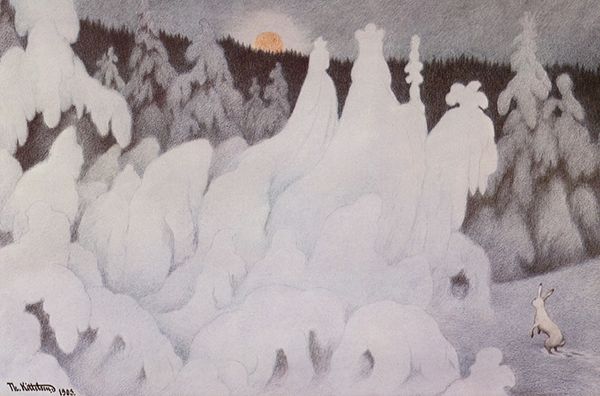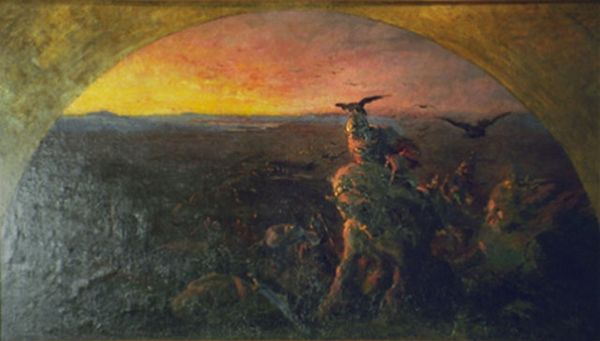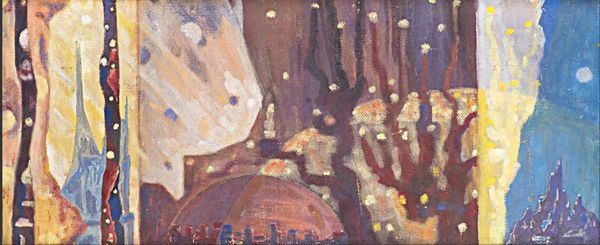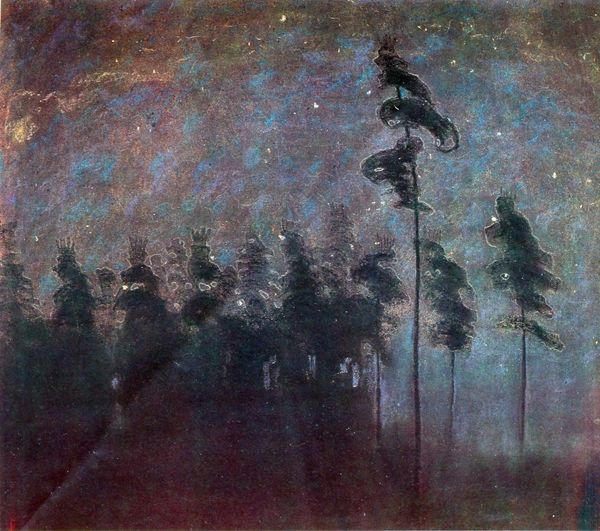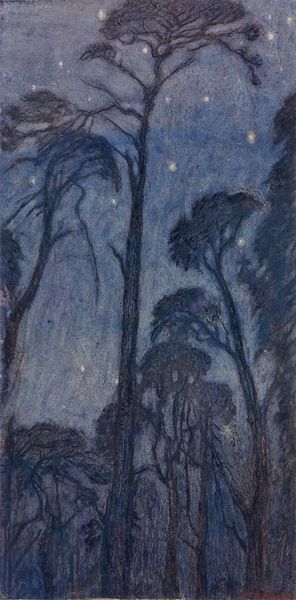
Copyright: Public domain
Curator: Here we have "The Sun," a painting realized with oil paint and pastel by Mikalojus Konstantinas Ciurlionis in 1907. Editor: Wow, it feels heavy, almost apocalyptic. That colossal sun looms with such gravity, doesn't it? It really sets a melancholic, if not grim, tone. Curator: Indeed. Observe how the upper section of the image plane is dominated by the sun itself, the formalist element of "the round" is key. Editor: The formal qualities aside, it's fascinating how the silhouette of the forest at the bottom grounds this massive, almost surreal sphere. Like reality tethering a dream. Curator: Precisely, the lower region presents us with more definable and conventional forms that function structurally to support the pictorial narrative and draw contrasts within the picture plane. I do wonder, what does that sun mean to you? Editor: I reckon, something enormous. Overpowering, even. It feels ancient, like some cosmic, judging eye over the world. It makes me feel very, very small, maybe reflective... It also brings to mind a sunset that might never give way to a dawn. What about you? Curator: Ciurlionis employs a fairly tight value scale to flatten areas like the night sky, while employing linear strategies in the forested ground to create depth. Ultimately, in all of his practice, it seems the artist is seeking the fundamental symbolic order behind a sensory experience. Editor: Well, either way, to view the sun as symbolic—not merely aesthetic—makes you feel that even simple pleasures carry a more vital energy that has always been there for you to tap in to... Curator: His Romantic inclinations and proclivity towards Symbolism makes that quite plausible, especially with the almost primordial imagery employed, yes. Editor: Well, thanks, you know I see this with completely renewed eyes now. Curator: It was a sincere pleasure.
Comments
No comments
Be the first to comment and join the conversation on the ultimate creative platform.
